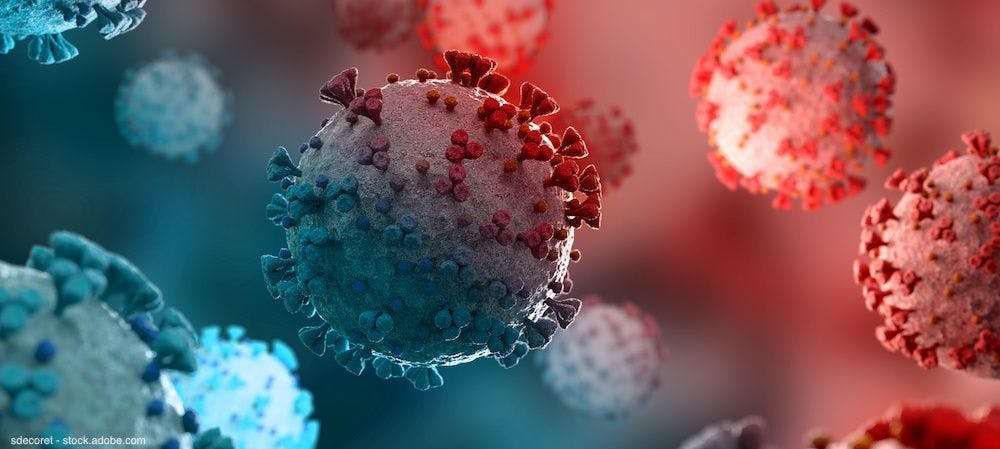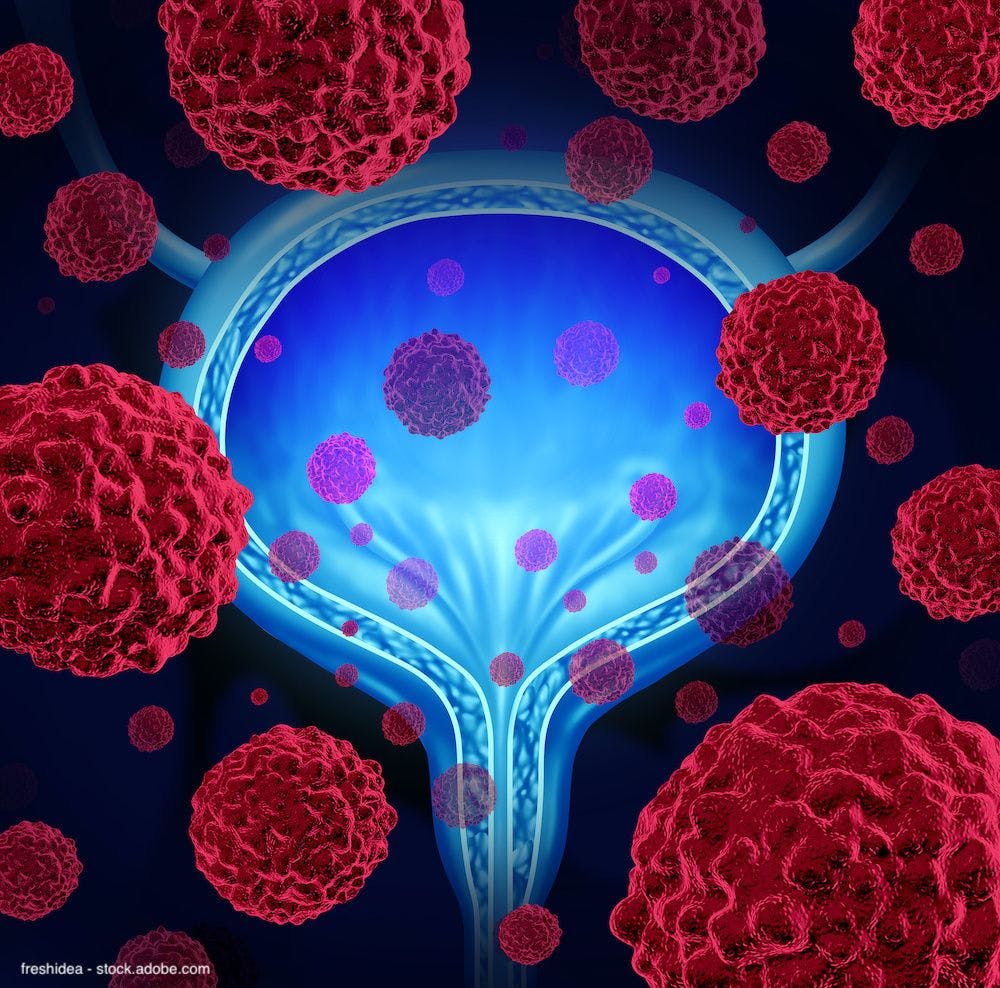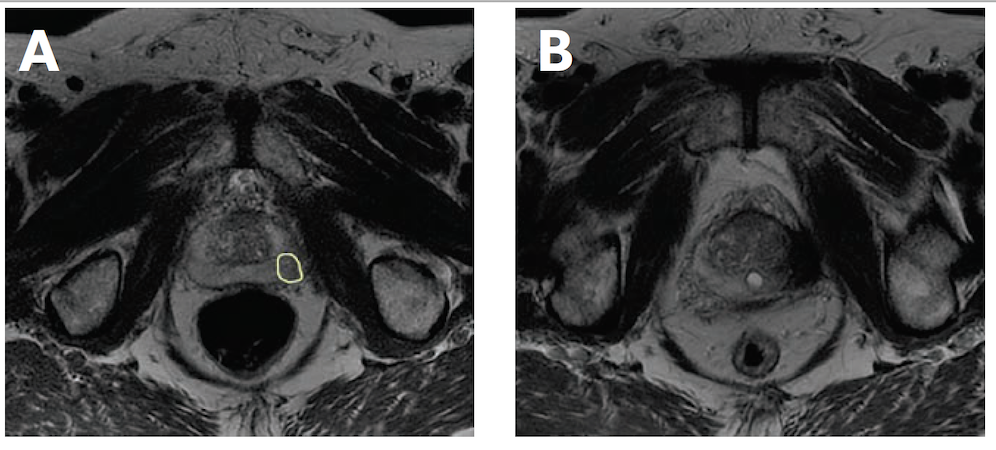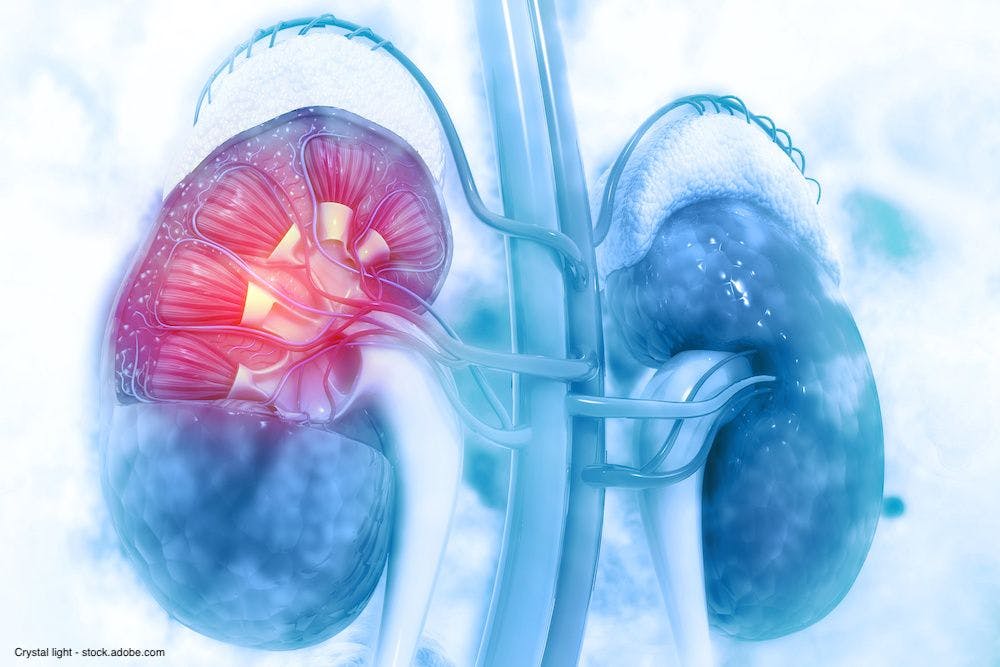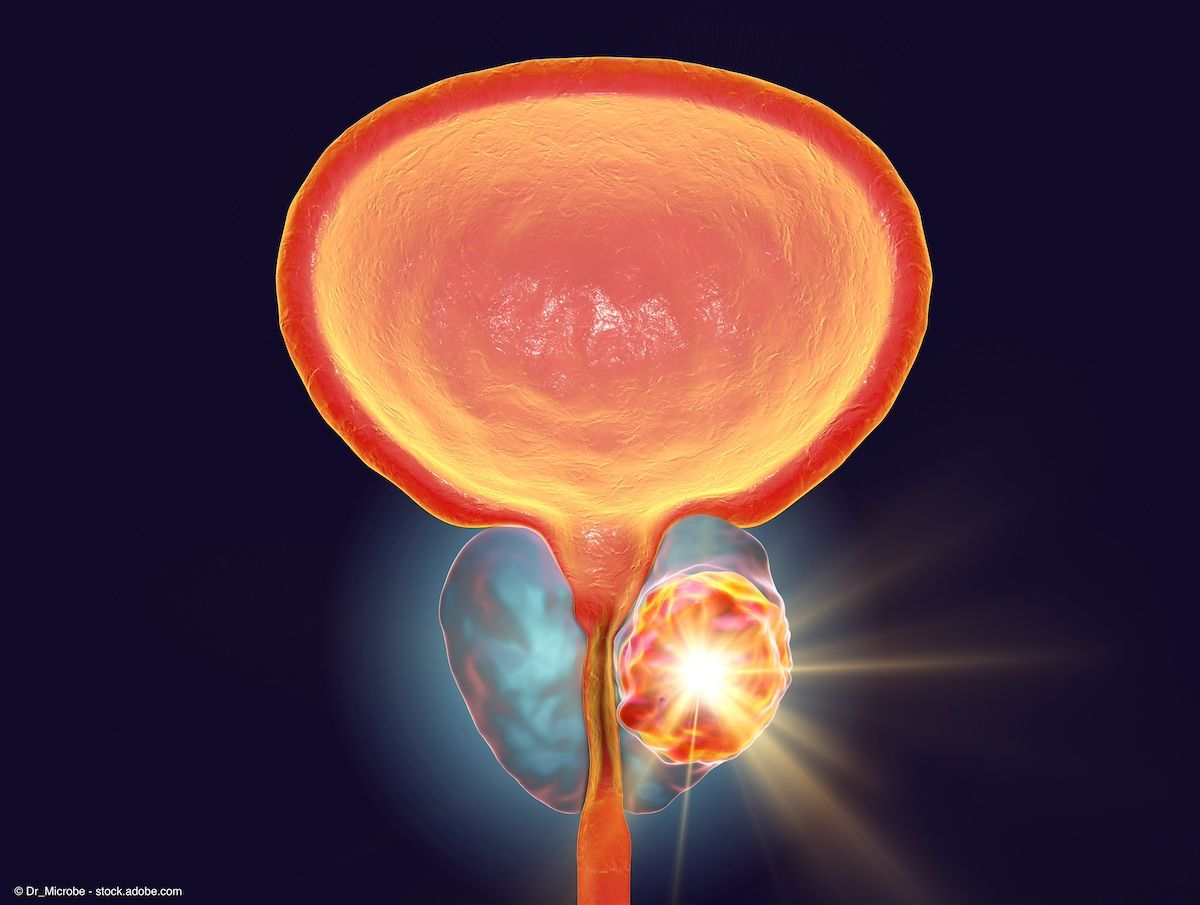Publication
Article
Urology Times Urologists in Cancer Care
Polygenic risk scores and potential use in risk assessment in prostate cancer
Author(s):
Opportunity exists to develop superior risk assessment models in prostate cancer.
Historically, the urology community has depended on eliciting a family history (FH) of prostate cancer and race as determinants when an individual may be at increased risk for harboring the disease. Often, these parameters were taken into consideration when a patient was referred for an elevated prostate-specific antigen (PSA) and may require a biopsy or was inquiring on when to start an early detection program. With the full understanding that certain low-risk prostate cancers do not lead to progressive disease and death and may be managed conservatively with active surveillance, the push over the past decade has been to tailor early detection/screening and biopsy protocols to try to identify those patients who truly would benefit from active treatment.
Two seminal papers1,2 in 2015 and 2016 highlighted the significance that men at risk of dying of prostate cancer, especially in the metastatic castration-resistant prostate cancer (mCRPC) space, harbored mutations in the DNA damage repair (DDR) gene pathway and that up to 12% of the time these may be inherited germline mutations. This is a much higher incidence than those historical data sets in men with localized disease. In these advanced cases, this was regardless of family history of prostate cancer or race.2 Consequently, there has been a deep push over the past 3 years to incorporate germline testing using next-generation sequencing (NGS) in patients with newly diagnosed prostate cancer or those with advanced disease and progression.
Taking all this into account, will the same testing strategy work in identifying patients at high risk who currently do not have a diagnosis? At the core and cellular level, all cancers are genetic. This predisposition to unregulated cell growth and carcinogenesis can at times be inherited, but often, depending on the gene, it requires that “second” environmental exposure, the “second hit,” that knocks out the other allele and will result in loss of function. Most of the heritable mutations are involved in the DDR pathway, which can then be subdivided into genes integral to homologous recombination repair (BRCA1, BRCA2, ATM, CHEK2) or to mismatch repair (MSH2, MSH6, MLH1, PMS2).
A mutation in the transcription factor HOXB13 is probably the most common inherited mutation but is not actionable at this time and does not differentiate low- versus high-grade disease.3 For the most part, specific mutations in many of these genes are considered high penetrance (the lifetime risk of developing prostate cancer is 2- to 5-fold higher) but rare (< 2%) in the general population. Unless you met National Comprehensive Cancer Network criteria based on family history connected with other associated cancers for these genes (breast, ovary, colorectal, pancreatic, for example, diagnosed at a younger age), using NGS to detect pathogenic variants in these specific candidate genes, despite the availability of broad cancer-specific testing panels offered by many of the molecular labs, would probably be of low yield and not cost effective.
However, another genetic predictor that could be utilized for risk assessment would be the use of single nucleotide polymorphisms (SNPs) and polygenic risk scores (PRS). By definition, SNPs are often used in ancestry testing and are present in at least 1% of the population. There are millions of SNPs that have been identified in the human genome, but approximately 160 have been associated with prostate cancer.4 They can be found in both coding (exons) and noncoding (introns) of the genome and are inherited independently of one another. Taken individually, a single SNP may have limited usefulness in assessing the risk of developing prostate cancer. But studied cumulatively as a PRS, they may be a stronger predictor for prostate cancer risk assessment. Given their more common presence in the population and shorter sequence, the potential cost will be much less than whole exon or genome sequencing.
Research points to superiority of GRS
In a number of studies, you may see reference to a genetic risk score (GRS), which can be defined as a tool that takes into account a PRS and has been standardized for the population and can then be interpreted as a relative risk (RR) to the population. For example, it has been reported in many studies that a (+) FH of prostate cancer carries RR of 1.5.5 Or, interpreted differently and easier for many clinicians (and patients) to understand, a person with a FH of prostate cancer has a 50% increased risk of developing the disease sometime in his life relative to the general population.
With the understanding that FH is an independent predictor of prostate cancer risk (and does not require additional testing), a number of studies have examined how GRS compares to FH in predicting prostate cancer risk, as well as how the 2 perform when added cumulatively. Utilizing a 110 prostate cancer-associated SNP panel, a GRS was calculated in the 3225 men enrolled in the chemoprevention REDUCE trial (NCT00056407). When considering FH and GRS only, 14% and 19%, respectively, were stratified to high-risk disease. When both FH and/or GRS were used, this increased to 30%.6 Using a similar cohort but focusing on 410 men with diagnosed prostate cancer and a 33-SNP panel, multiple variables, including both binary (FH, digital rectal exam) and continuous (age, PSA, volume, calculated GRS), the highest area under the curve for the independent variables was 0.59 for the GRS, 0.52 for FH. When all the clinical parameters (age, FH, PSA, vol, # of + cores), the AUC was 0.62, but increased to 0.66 when the GRS was added.7
Finally, a recent study looked at a large cohort of over 1900 patients with prostate cancer who had undergone radical prostatectomy and a matching number of unaffected controls.8 But unique to this design was that all patients had undergone NGS and germline testing, and patients were excluded for analysis if they had identified pathogenic mutations in the DDR genes commonly associated. They constructed a GRS based on 72 validated prostate cancer-associated SNPs. Their results demonstrated that the GRS was superior to FH, which can be somewhat difficult to accurately assess, in predicting the relative and lifetime risk of both low- and high-grade prostate cancer.
There are some data gaps in the literature when determining the potential of using GRS as a tool for prostate cancer risk assessment in the general population. The most significant is that the library of prostate cancer-associated SNPs, as well as most patients in many of these studies, have been primarily of European ancestry and/or Caucasian males. Extrapolation of this data to other races and ethnicities should be interpreted with caution and more studies, especially in the African American population, are needed and ongoing. Additionally, the cost of SNP/GRS testing needs to be evaluated. FH taking is free but can be quite variable and accuracy often questionable.
Conclusions
As we move into gaining a better understanding of the influence of the genome on prostate cancer, whether that be known pathogenic gene mutations or cancer associated SNPs, new computational models are required to incorporate these inputs beyond our traditional clinical values. At this point, we are making gains in adopting germline testing, when appropriate, in patients newly diagnosed with high risk as well as those with advanced disease. Part of this shift does require obtaining and documenting a detailed FH, preferably across 3 generations. Along with this, there is clearly an opportunity to develop superior risk assessment models that consider FH, GRS, and identified pathogenic variants, much like our colleagues who manage patients with breast cancer. Given that the actual testing platform (NGS) can provide the information on the latter 2 sources and that studies continue to show the improvement of adding genomic data for more accurate risk assessment, there is a growing need to build a superior algorithm that will identify the at-risk patient.
Concepcion is director of the Comprehensive Prostate Center and clinical associate professor of urology at Vanderbilt University School of Medicine, Nashville, Tennessee. He is editor-in-chief of Urologists in Cancer Care™.
References
1. Robinson D, Van Allen EM, Wu YM, et al. Integrative clinical genomics of advanced prostate cancer. Cell. 2015;161(5):1215-1228. doi:10.1016/j.cell.2015.05.001
2. Pritchard CC, Mateo J, Walsh MF, et al. Inherited DNA-repair gene mutations in men with metastatic prostate cancer. N Engl J Med. 2016;375(5):443-453. doi:10.1056/NEJMoa1603144
3. Ewing CM, Ray AM, Lange EM, et al. Germline mutations in HOXB13 and prostate-cancer risk. N Engl J Med. 2012;366(2):141-149. doi:10.1056/NEJMoa1110000.
4. Schumacher FR, Al Olama AA, Berndt SI, et al. Association analyses of more than 140,000 men identify 63 new prostate cancer susceptibility loci. Nat Genet. 2018;50(7):928-936. doi:10.1038/s41588-018-0142-8
5. Johns LE, Houlston RS. A systematic review and meta-analysis of familial prostate cancer risk. BJU Int. 2003;91(9):789-794. doi:10.1046/j.1464-410x.2003.04232.x
6. Na R, Labbate C, Yu H, et al. Single-nucleotide polymorphism-based genetic risk score and patient age at prostate cancer diagnosis. JAMA Netw Open. 2019;2(12):e1918145. doi:10.1001/jamanetworkopen.2019.18145
7. Kader AK, Sun J, Reck BH, et al. Potential impact of adding genetic markers to clinical parameters in predicting prostate biopsy outcomes in men following an initial negative biopsy: findings from the REDUCE trial. Eur Urol. 2012;62(6):953-961. 10.1016/j.eururo.2012.05.006
8. Black MH, Li S, LaDuca H, et al. Validation of a prostate cancer polygenic risk score. Prostate. 2020;80(15):1314-1321. doi:10.1002/pros.24058
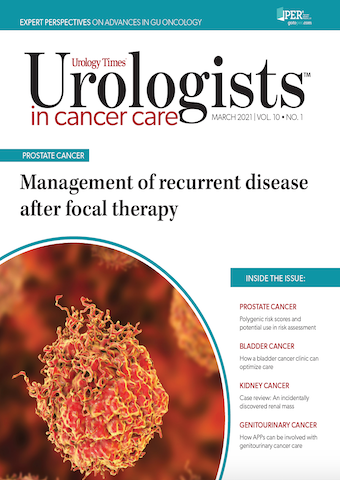
Newsletter
Stay current with the latest urology news and practice-changing insights — sign up now for the essential updates every urologist needs.


